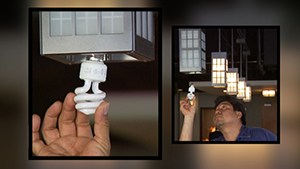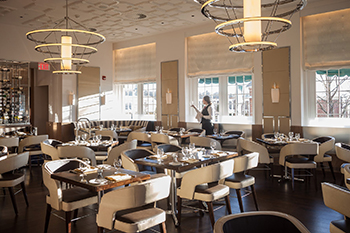Happy 60th, Tots!
 As Tater Tots® hit the Big 60, the Idaho Potato Commission celebrates six decades of tot-inspired menu creativity.
As Tater Tots® hit the Big 60, the Idaho Potato Commission celebrates six decades of tot-inspired menu creativity.
When Tater Tots® began arriving in grocery stores in 1954, they quickly caught on as a snack food, a side dish and the foundation for casseroles at dinner tables across America. (Tater Tots are a registered trademark of Ore-Ida, a division of the H.J. Heinz Company).
Across the next 60 years, foodservice operators capitalized on tot popularity, enthusiastically integrating them into menus ranging from quick service to white tablecloth. As these bite-sized potato croquettes officially move into middle age, the Idaho Potato Commission (IPC) salutes the tot as both an inspired potato product and a springboard for potato creativity.

 This second installment in a four-part series on assessment methods focuses on oral presentations and class participation.
This second installment in a four-part series on assessment methods focuses on oral presentations and class participation. Integration of industry and education better prepares students for success and makes a school essential in the eyes of all stakeholders. Good news is that opportunities for your program to partner with your local business community are endless.
Integration of industry and education better prepares students for success and makes a school essential in the eyes of all stakeholders. Good news is that opportunities for your program to partner with your local business community are endless. New research from the National Restaurant Association shows a substantial number of operators are implementing sustainability best practices into their businesses.
New research from the National Restaurant Association shows a substantial number of operators are implementing sustainability best practices into their businesses. Twenty restaurants across the United States were recipients of 2014 Achievement of Excellence Awards from the American Culinary Federation (ACF) this summer. Three of them are on The Culinary Institute of America’s Hyde Park, N.Y. campus: American Bounty Restaurant, The Bocuse Restaurant, and Ristorante Caterina de’ Medici. In addition, nine CIA graduates were honored at the organization’s awards event held during the ACF national conference in Kansas City, Mo., in July.
Twenty restaurants across the United States were recipients of 2014 Achievement of Excellence Awards from the American Culinary Federation (ACF) this summer. Three of them are on The Culinary Institute of America’s Hyde Park, N.Y. campus: American Bounty Restaurant, The Bocuse Restaurant, and Ristorante Caterina de’ Medici. In addition, nine CIA graduates were honored at the organization’s awards event held during the ACF national conference in Kansas City, Mo., in July. Discover homegrown American lamb stories and recipes to inspire your menu. A new booklet from the American Lamb Board shares information on American lamb from shepherds to chefs across the country. The booklet also includes chef-developed recipes including chorizo-spiced lamb loin and merguez flatbread. To order your fee copy of the booklet, e-mail
Discover homegrown American lamb stories and recipes to inspire your menu. A new booklet from the American Lamb Board shares information on American lamb from shepherds to chefs across the country. The booklet also includes chef-developed recipes including chorizo-spiced lamb loin and merguez flatbread. To order your fee copy of the booklet, e-mail  The National Mango Board announces the release of a new tool to inspire menu innovation, Mango Flavor Pairing Guide. The guide was developed to create excitement about fresh mango as a versatile ingredient, the key to innovation all across menus, all year ’round. The mango pairings showcase complementary and contrasting sensory combinations from familiar to surprising.
The National Mango Board announces the release of a new tool to inspire menu innovation, Mango Flavor Pairing Guide. The guide was developed to create excitement about fresh mango as a versatile ingredient, the key to innovation all across menus, all year ’round. The mango pairings showcase complementary and contrasting sensory combinations from familiar to surprising. Consumer interests and industry needs were the driving forces behind the U.S. Highbush Blueberry Council’s (USHBC) recent website overhaul and launch. Fresh design, a streamlined format and the optimized platform for mobile and tablet viewing provide industry professionals and consumers alike with a consistent and engaging experience.
Consumer interests and industry needs were the driving forces behind the U.S. Highbush Blueberry Council’s (USHBC) recent website overhaul and launch. Fresh design, a streamlined format and the optimized platform for mobile and tablet viewing provide industry professionals and consumers alike with a consistent and engaging experience.